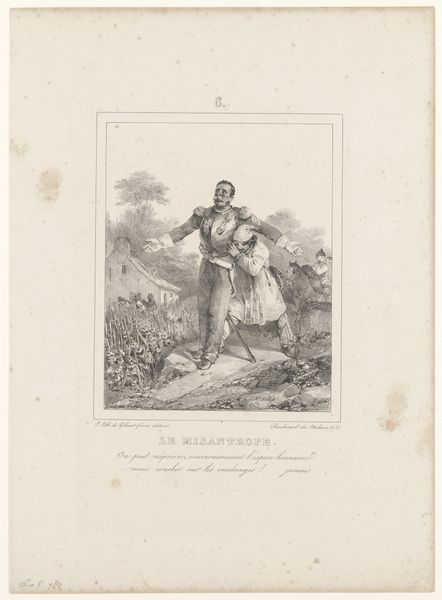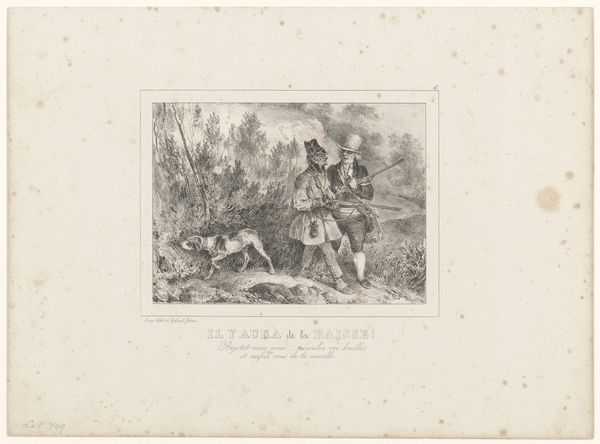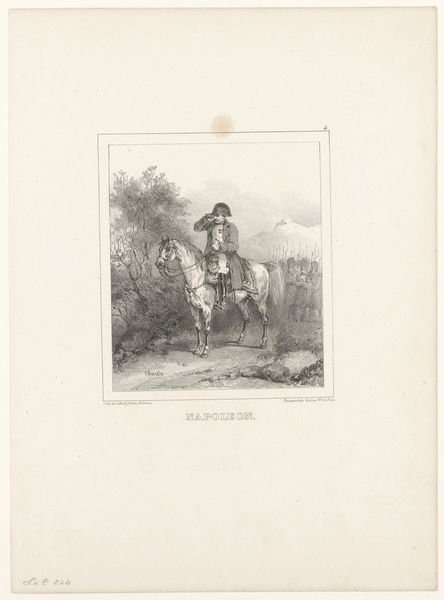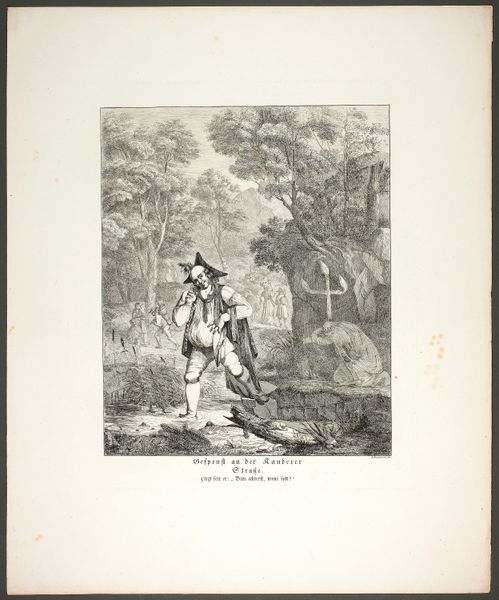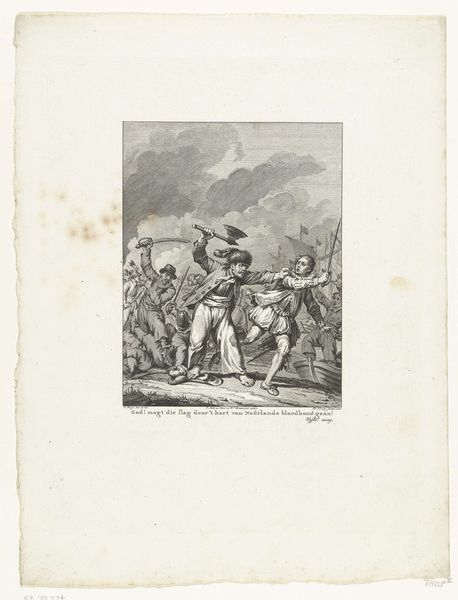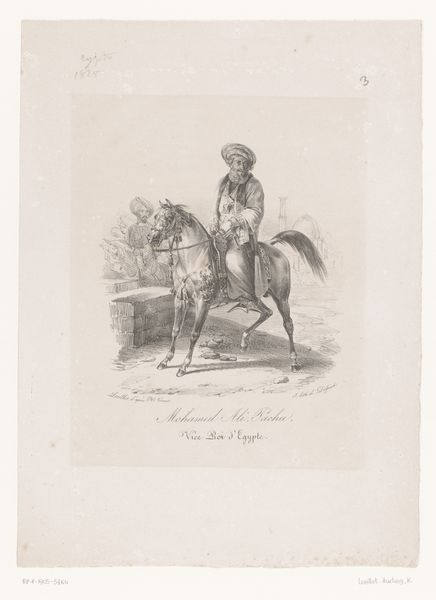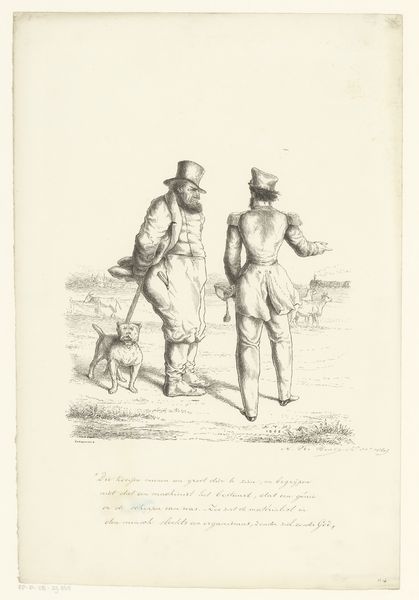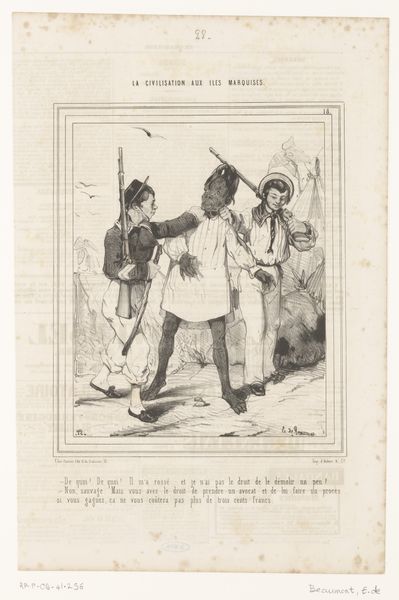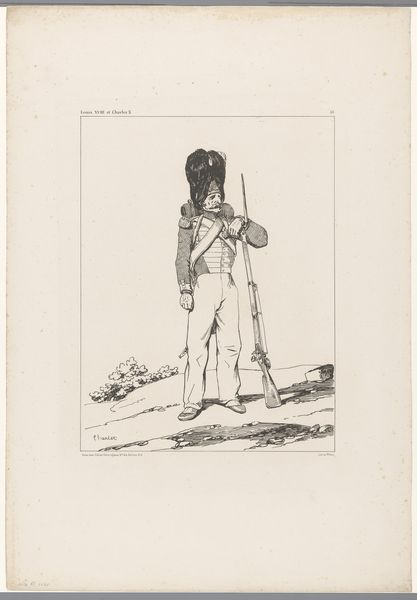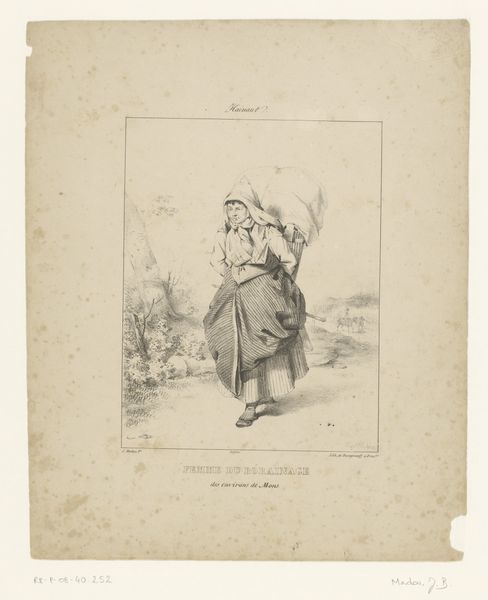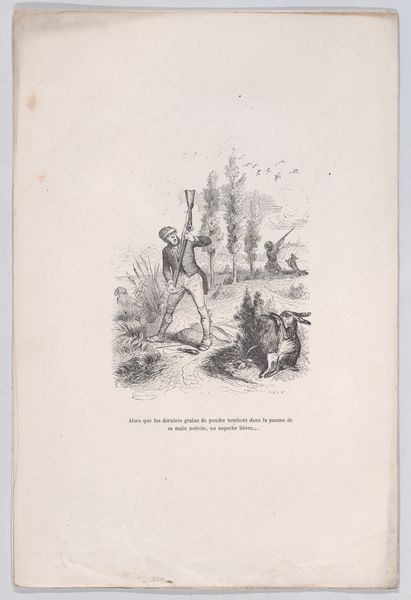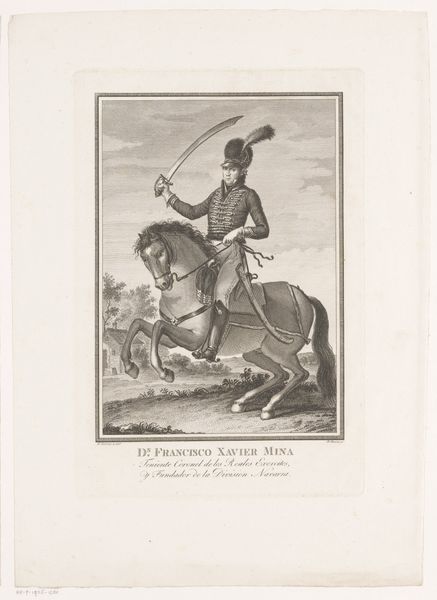
drawing, print, paper, engraving
#
portrait
#
drawing
#
narrative-art
# print
#
landscape
#
figuration
#
paper
#
romanticism
#
genre-painting
#
engraving
Dimensions: height 338 mm, width 247 mm
Copyright: Rijks Museum: Open Domain
Curator: Looking at this print by Nicolas Toussaint Charlet, made around 1832, I’m immediately struck by the tender scene. It's titled "Soldier on the Road with a Dog and a Basket Full of Puppies." The piece, an engraving on paper, is housed here at the Rijksmuseum. What catches your eye initially? Editor: The puppies! They're crammed into that woven basket, a chaotic jumble of little bodies. It evokes such warmth, contrasting sharply with the soldier's somewhat stern profession. The way he’s holding the basket seems delicate, protective. The dog accompanying them, bounding with apparent joy, contributes to this feeling of domesticity imposed on what one might associate with militarism. Curator: Indeed. Charlet was known for depicting scenes of military life, but often with a human touch. Consider the period - the Romantic era, where there was a real emphasis on sentimentality and the common man, often portrayed against a backdrop of upheaval. Perhaps he aims to soften the image of the military through an appeal to basic affections. Editor: The dog definitely pulls at those emotional strings. Dogs appear frequently in art as symbols of fidelity and protection, echoing his protective role and possibly suggesting a sense of loyalty both given and expected. In some ways, this almost feels like a pilgrimage, these figures travelling together in a sort of procession of life, all framed within a muted palette. It’s difficult not to think about the wider cultural perceptions of duty and honor at play here too, where even soldiers and the instruments of warfare might engage and nurture nascent new life. Curator: And the print medium itself matters. Prints were widely accessible. By focusing on the gentler side of military figures, Charlet was likely participating in a broader project of shaping public opinion and influencing the perception of soldiers amongst society. Furthermore, circulating these sentimental images of a dog beside the basket emphasizes the theme to resonate, and therefore be embraced widely across societal hierarchies. Editor: It creates a powerful tension, a paradox of life amid a backdrop frequently punctuated by its opposite. The details invite pondering regarding larger issues, such as resilience and hope within turbulent times. Curator: A thoughtful observation; examining art of the era through multiple interpretive avenues unlocks historical truths concerning both creation and response to images, themes, symbols, and messages contained within such visual offerings. Editor: It makes me think how symbols change their meaning over centuries depending upon evolving social awareness concerning political power dynamics within a culture which is often encoded even at the surface narrative plane of everyday imagery like Charlet's rendering found in “Soldier on the Road…”
Comments
No comments
Be the first to comment and join the conversation on the ultimate creative platform.
